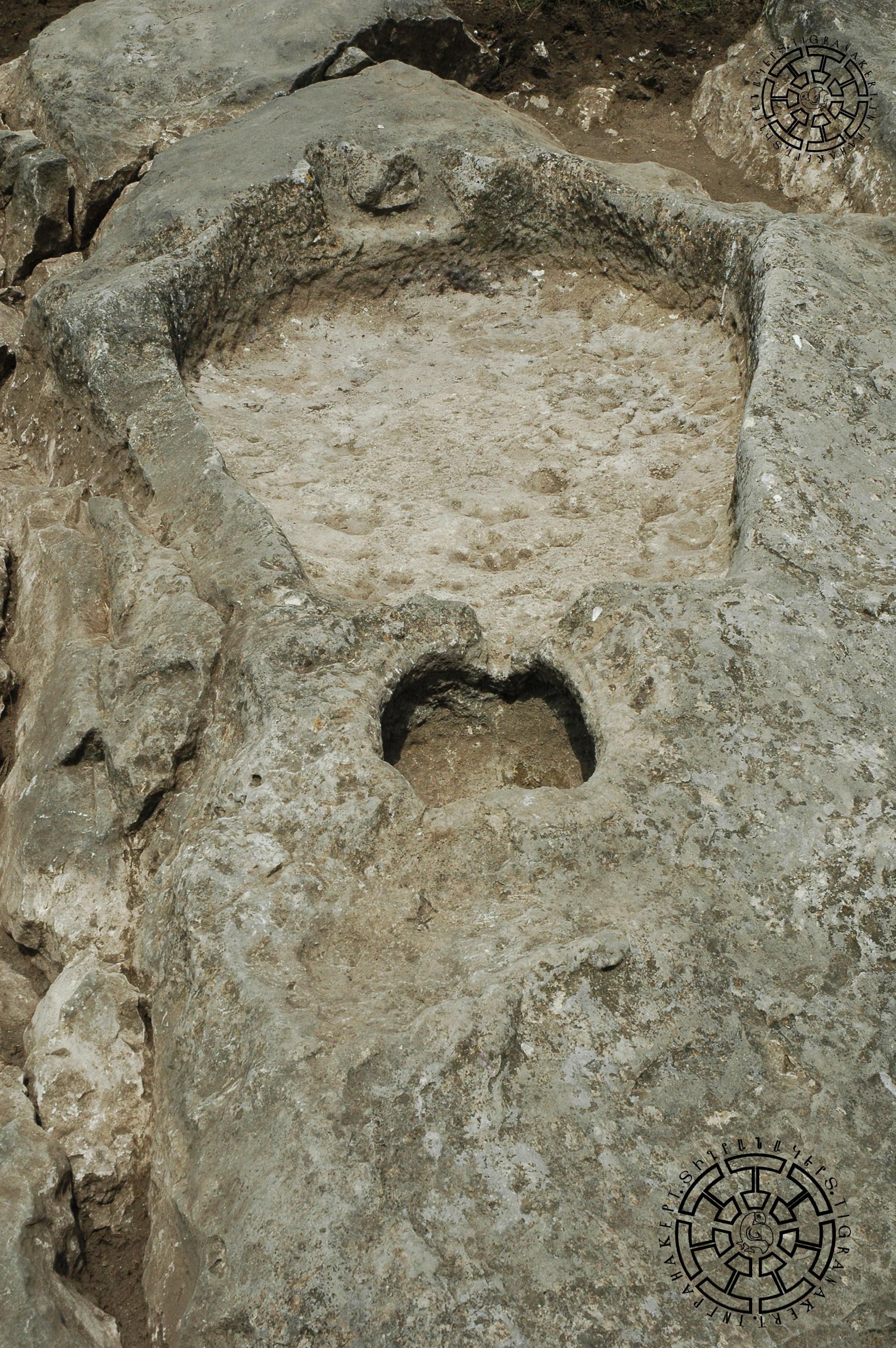The Rock-Carved Winepress
The rock-carved winepress of Tigranakert was discovered and excavated in 2012. It is located at the southwestern foothills of Vankasar, below the southern wall of the Fortified Quarter, on the rocky slope of the valley leading down to the Royal Springs (Figs. 1, 2). As a result of the excavations, a polygonal sail was opened at a depth of about 1 meter from the surface, from which the squeezed grape juice flowed into a wine pressing hole measuring 0.40×0.45 meter, located at a depth of 1.45 meters from the surface. The winepress consists of a rock-carved grape squeezing polygonal platform (dimensions: length: 2.20 meters, width: 1.76 meters, depth: 0.4-0.2 meters), where about one ton of grapes could be crushed at once, and again, a rock-carved hole to collect the must; the capacity of this hole is about 40 liters, and a special platform for removing the must from the well and pouring it into containers (Fig. 3). In the upper part of the winepress, there are three grooved carvings in the shape of the letter ”U”. It is likely that it was used to cover the winepress with wooden posts to protect the workers from the sun or rain during the grape pressing. Similar to the other rock-carved complexes of the city, the winepress was likely constructed in the first century BC-the first century AD. Given its rock-carved nature, it could have been used for centuries. The slopes of Vankasar near the Royal Springs have not been excavated. It is not excluded that other winepresses could have been found on the slopes next to the springs.

The rock-carved winepress of Tigranakert has close parallels with the rock-carved winepresses of the Agarak archaeological site (Aragatsotn region of Armenia), which refer to the Late Antiquity and Early Middle Ages. The medieval monasteries of Armenia, including Artsakh, had a developed viticultural economy, which included winepresses and cellars. In addition, a vast stone-cut floor for a winepress has been preserved in Dadivank. This floor comprises a lofty and deep platform and a cellar full of jars. In fact, the winepress of Tigranakert is unique in its form in all Artsakh.
Based on excavations, the marked agricultural economy of Tigranakert is represented by a number of structures and equipment for processing and preserving food, and the winepress is one of the important pieces of evidence of such an economy.

